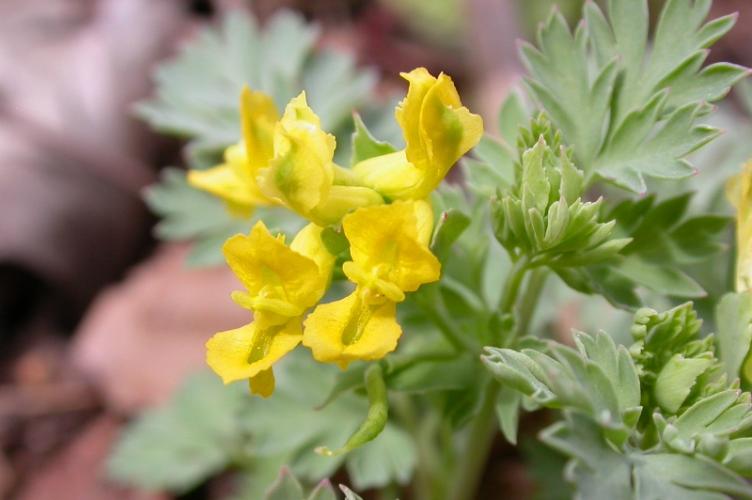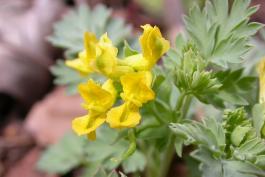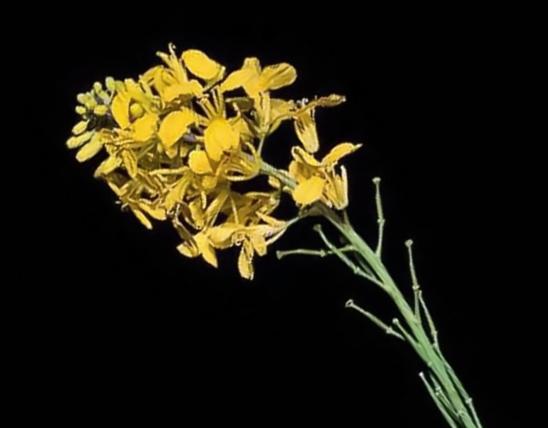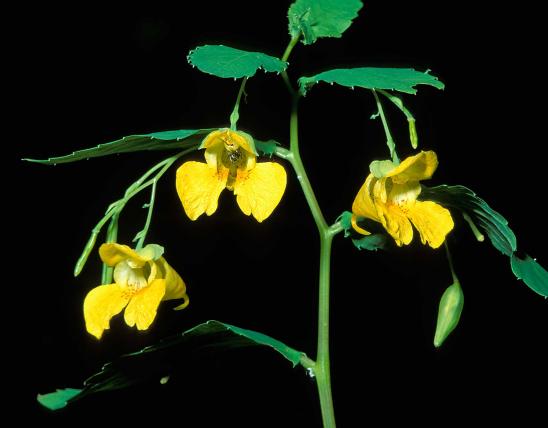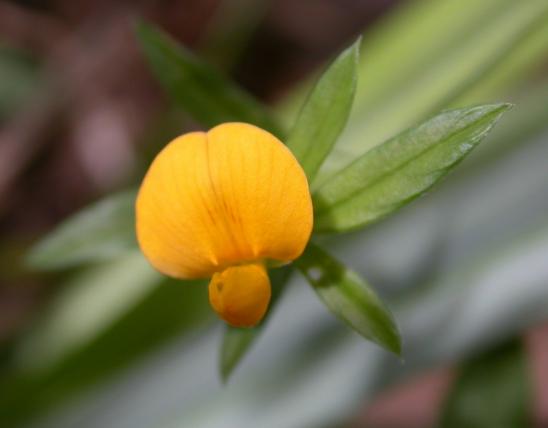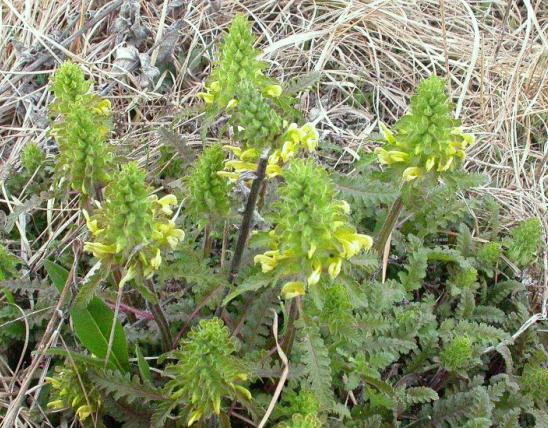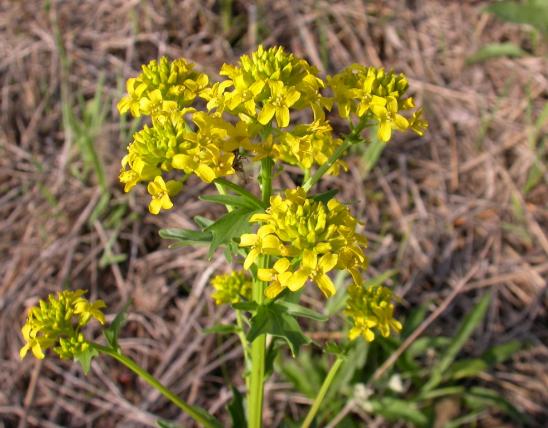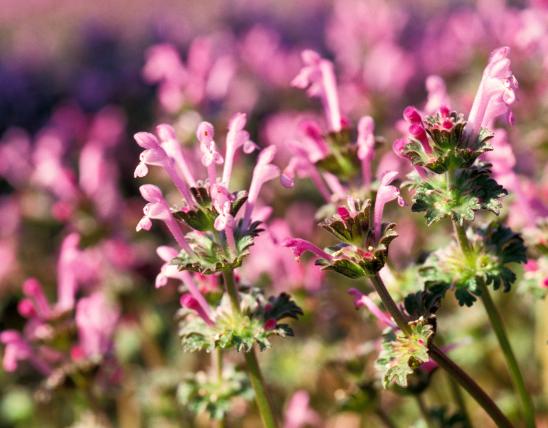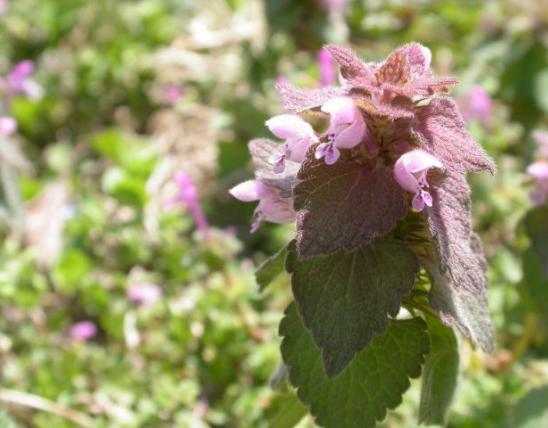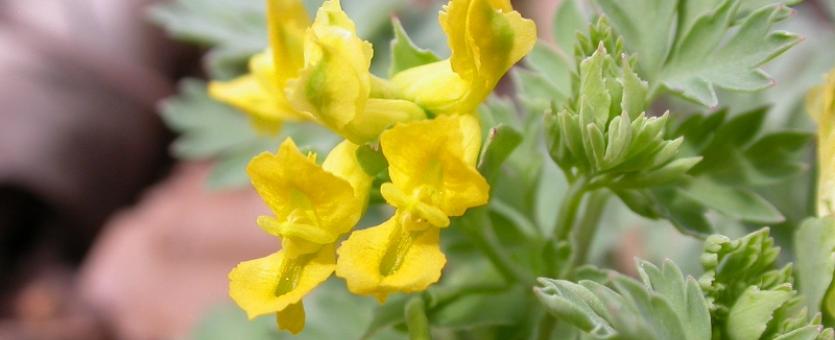
All Corydalis species are delicate, low-growing, and sometimes form mats. Flowers are in terminal racemes with a few florets, each light yellow, the petals converging (but not fused) into a tubelike appearance with a spur; the supporting stem attached near the center of the flower rather than at the end. Blooms April–May. Leaves are similar to Dutchman’s breeches; compound, with fernlike, dissected divisions, carried on flowering stems and arising from the base, bluish green.
There are four species of Corydalis in Missouri, and they are quite similar in appearance.
- Pale corydalis (C. flavula) has smaller flowers than the others (about ⅜ inch long), with an incurved (not straight) floral tube; the flower stalks are ⅜–¾ inch long, longer than all our other species. It is the most abundant corydalis in Missouri. Compared to our other species, it prefers moister, richer soils in shadier locations.
- Small-flowered corydalis (or slender fumewort, C. micrantha) is the second most common corydalis in the state. Compared to C. flavula, it has larger, straighter flowers with a larger spur and shorter leaf stalk. Use a hand lens, and you'll see the surfaces of the seeds are finely pebbled (not smooth). It's scattered statewide; one subspecies (australis) is found only in sandy places in the Bootheel.
- Golden corydalis (C. aurea) is uncommon; it is also widely scattered, mostly south of the Missouri River, and usually grows in acidic soils in glades, upland prairies, and dry forest openings. Like C. micrantha, its flowers are larger, straighter, with a larger spur and shorter leaf stalk than that of C. flavula. C. aurea's flowers are larger than those of C. micrantha, though, and the surfaces of the seeds are smooth (not pebbled).
- Mealy corydalis (C. crystallina) is scattered in western Missouri, mostly south of the Missouri River, and lives in acidic soils of glades, upland prairies, and roadsides. It is similar to C. micrantha and C. aurea, but its fruits are covered with short, white, bladderlike inflated hairs, making it look mealy. Also, although the other corydalis species flowers range from pale yellow to bright yellow, this species' flowers are always bright yellow.
Height: to about 10 inches.
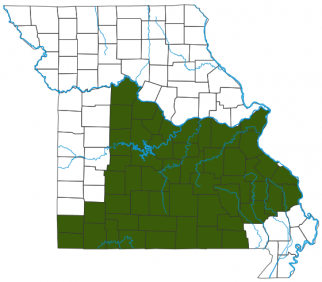
Scattered, mostly south of the Missouri River. Pale corydalis is primarily an Ozark flower of south and central Missouri.
Habitat and Conservation
Occurs in bottomland forests, rich, moist upland forests in ravines, bases of bluffs, banks of streams and rivers, and also along shaded roadsides. Pale corydalis, although abundant and common, is still rather inconspicuous. All our corydalis species may be found along roadsides and streams. Our other three corydalis species otherwise tend to occur in drier, more upland sites, such as prairies, glades, savannas, openings in dry upland forests, and so on, and some prefer acidic soils.
Status
Botanists have been using DNA studies to uncover the true genetic relationships among the plants. They have long known that the fumitories are closely related to the poppies. In the past, the fumitories were in their own family, the Fumariaceae, but now they are considered a subfamily (Fumarioideae) of the poppy family. Fumitories are distinguished from poppies by their unusual flowers with two dissimilar pairs of petals with either 1 or 2 planes of symmetry (not radially symmetrical), clear sap, and their own forms for stamens and stigmas. Examples of fumitories include bleeding hearts and Dutchman's breeches.
Human Connections
Pale corydalis and its close relatives contain a variety of alkaloids and other chemicals that render them “medicinal” and probably toxic. Despite any historic medicinal uses uncovered by anthropologists, it's best not to experiment with such plants.
Ecosystem Connections
This species, like other early spring wildflowers in forests, is adapted so that its growth and flowering take place before the trees get their leaves and shade them out. At the same time, though, these flowers require the forest habitat to survive.
